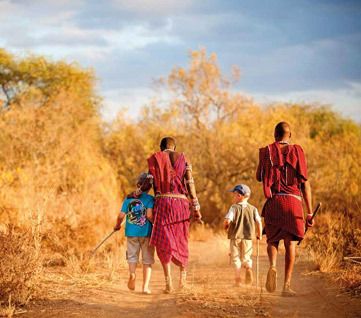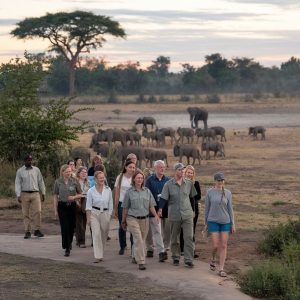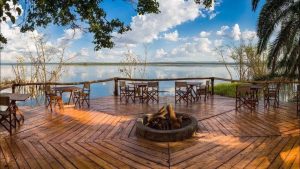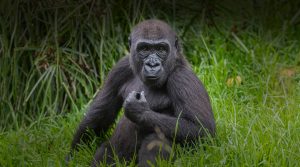Kenya, one of Africa’s top safari destinations, is world-famous for its Big Five game drives and vast savannahs. Beyond the vehicle safari experience, Kenya also offers nature walking safaris, which allow travelers to explore the wilderness on foot. These safaris bring visitors closer to the natural world, providing an authentic and immersive encounter with wildlife, landscapes, and culture.
What is a nature walking safari in Kenya?
A nature walking safari in Kenya is a guided exploration of wildlife areas on foot, led by experienced rangers or Maasai guides. Unlike vehicle-based safaris, walking safaris focus on observing ecosystems up close—spotting animal tracks, identifying plants, and listening to bird calls. The experience slows down the safari, allowing travelers to engage their senses fully while learning about the interconnectedness of Kenya’s wildlife and environment.
Where can you do nature walking safaris in Kenya?
Kenya offers diverse landscapes that make walking safaris rewarding. Popular destinations include:
- Masai Mara National Reserve – Walks in private conservancies like Naboisho or Ol Kinyei, away from the main crowds.
- Amboseli National Park – Guided walks around community conservancies with views of Mount Kilimanjaro.
- Laikipia Plateau – Home to luxury conservancies like Lewa and Ol Pejeta, where walking safaris are highly developed.
- Hell’s Gate National Park – A unique park where walking is the primary activity due to the absence of dangerous predators.
- Tsavo National Parks – Vast wilderness areas offering guided bush walks in safe zones.
- Mount Kenya National Park – Walks through montane forests and high-altitude trails.
Each location provides a unique backdrop, from open savannahs to rugged valleys and volcanic landscapes.
What wildlife can you see on a walking safari in Kenya?
Walking safaris in Kenya allow you to spot a wide range of wildlife at a safe distance. Common sightings include giraffes, zebras, antelopes, buffalos, and elephants. Birdlife is abundant, with hornbills, weavers, sunbirds, and raptors frequently observed. In conservancies, you may also come across black and white rhinos or smaller predators like jackals. Walking safaris highlight details often missed on drives, such as insects, reptiles, animal tracks, and medicinal plants used by local communities.
How safe are nature walking safaris in Kenya?
Nature walking safaris in Kenya are safe when guided by professional rangers and Maasai warriors. Guides are trained in animal behavior, navigation, and safety measures. Most walking safaris take place in conservancies or designated zones within national parks, reducing the risk of close encounters with dangerous predators. Groups are kept small, and all participants are briefed on safety protocols. With expert guidance, travelers can enjoy the adventure without unnecessary risks.
Do you need permits for walking safaris in Kenya?
Permits are required for some walking safaris in Kenya, especially in national parks managed by the Kenya Wildlife Service (KWS). For example, Hell’s Gate National Park has a walking entrance fee, while conservancies such as Lewa or Ol Pejeta include guided walks as part of conservation fees. In the Masai Mara conservancies, walking is often bundled into the camp or lodge package. Booking in advance through a licensed tour operator or lodge ensures availability.
How much does a nature walking safari in Kenya cost?
The cost of a walking safari in Kenya varies by location and exclusivity:
- Short walks inside parks: $20–$40 per person.
- Conservancy guided walks: $50–$80 per person.
- Private luxury walking safaris with Maasai guides: $100–$200 per person.
Some lodges include guided walking safaris in their room rates, especially in high-end conservancies. Budget travelers can access affordable walking experiences in community areas and parks like Hell’s Gate.
What is the best time to go for a walking safari in Kenya?
The best time for walking safaris in Kenya is during the dry seasons:
- June to October (cool, dry months).
- December to February (short dry season).
During these periods, trails are easier to navigate, and wildlife is concentrated around water sources. The rainy seasons (March–May and November) make some walking routes muddy, but birdwatchers prefer these months due to migratory species.
Which national parks in Kenya offer walking safaris?
Several parks and reserves in Kenya offer walking safari opportunities:
- Hell’s Gate National Park – Unique for being predator-free, allowing free walking and cycling safaris.
- Amboseli National Park – Walking safaris in community-managed areas with Kilimanjaro views.
- Masai Mara Conservancies – Walking safaris with Maasai guides in private reserves.
- Lewa Wildlife Conservancy – Home to endangered rhinos, offering luxury walking safaris.
- Ol Pejeta Conservancy – Famous for rhino conservation and immersive walking experiences.
- Tsavo East and West – Selected walking routes under ranger supervision.
- Mount Kenya National Park – Forest and alpine walking trails.
These locations combine wilderness immersion with cultural and conservation experiences.
How do walking safaris in Kenya differ from game drives?
Walking safaris in Kenya offer a slower, more intimate experience compared to game drives. Game drives cover larger areas quickly, ideal for spotting lions, cheetahs, and herds of elephants. In contrast, walking safaris focus on the finer details—animal footprints, bird nests, insects, and plants. The silence of walking allows travelers to feel the wilderness more deeply and engage with the ecosystem in ways vehicles cannot. Both experiences complement each other, and many itineraries combine the two.
What should you pack for a walking safari in Kenya?
Packing appropriately enhances the walking safari experience. Essentials include:
- Neutral-colored, breathable clothing.
- Sturdy walking or hiking boots.
- A wide-brimmed hat and sunglasses.
- Sunscreen and insect repellent.
- A reusable water bottle.
- Lightweight binoculars.
- A rain jacket in wet seasons.
Avoid bright colors and perfumes, as they can attract insects or disturb wildlife.
Can walking safaris in Kenya be combined with other activities?
Yes, walking safaris in Kenya are often combined with other safari activities. Many itineraries mix game drives, hot-air balloon rides, and cultural visits with Maasai villages. In conservancies, travelers can enjoy night game drives after a day of walking. Combining activities creates a balanced safari experience that includes both adventure and relaxation.
Are walking safaris in Kenya suitable for families?
Some walking safaris in Kenya are family-friendly, especially in areas without predators like Hell’s Gate National Park. Short guided walks around lodges or conservancies are also suitable for children. However, most walking safaris with large wildlife encounters have age restrictions, usually requiring participants to be at least 12–15 years old. Families should consult with guides or lodges before booking to ensure safety and suitability.
How long does a typical nature walking safari in Kenya last?
The duration of walking safaris in Kenya varies:
- Short walks: 1–2 hours around lodges or community areas.
- Medium walks: 3–4 hours exploring savannahs and valleys.
- Full-day treks: 6–8 hours, sometimes with picnic stops and cultural visits.
The choice depends on traveler preferences, fitness levels, and the park visited.
Are there budget-friendly walking safaris in Kenya?
Yes, budget travelers can enjoy walking safaris in Kenya. Parks like Hell’s Gate charge low entry fees, making walking accessible. Community conservancies near Amboseli, Tsavo, and Masai Mara also provide affordable guided walks. For travelers staying in mid-range camps, guided nature walks are often included or available at reasonable fees.
Do walking safaris in Kenya include birdwatching experiences?
Kenya is a birdwatcher’s paradise, home to over 1,100 bird species. Walking safaris are ideal for birding, as guides can take travelers to bird-rich habitats like savannah grasslands, riverbanks, and forests. Popular species include lilac-breasted rollers, secretary birds, hornbills, kingfishers, and raptors. Birdwatching is often a highlight of walking safaris in conservancies and wetlands.
What cultural experiences can be included in walking safaris in Kenya?
Walking safaris in Kenya often include cultural experiences with Maasai or Samburu communities. Travelers can learn about traditional livestock keeping, medicinal plants, and warrior customs. In Laikipia and the Masai Mara conservancies, cultural walking tours combine wildlife viewing with local traditions, offering insights into Kenya’s heritage.
How do nature walking safaris in Kenya contribute to conservation?
Walking safaris support sustainable tourism and wildlife conservation. Fees from conservancies and permits fund anti-poaching patrols, habitat restoration, and local community projects. By employing local guides, walking safaris create alternative livelihoods that reduce pressure on natural resources. The low-impact nature of walking also helps minimize disturbance to ecosystems compared to vehicle traffic.
What are the benefits of choosing a nature walking safari in Kenya?
Walking safaris in Kenya provide many benefits:
- A closer, more authentic connection with nature.
- Opportunities for photography and birdwatching.
- Cultural interactions with Maasai and Samburu guides.
- Lower environmental impact compared to vehicles.
- Direct contributions to conservation and communities.
These safaris offer an enriching experience that blends adventure, culture, and conservation, making them an essential part of any Kenya safari itinerary.




